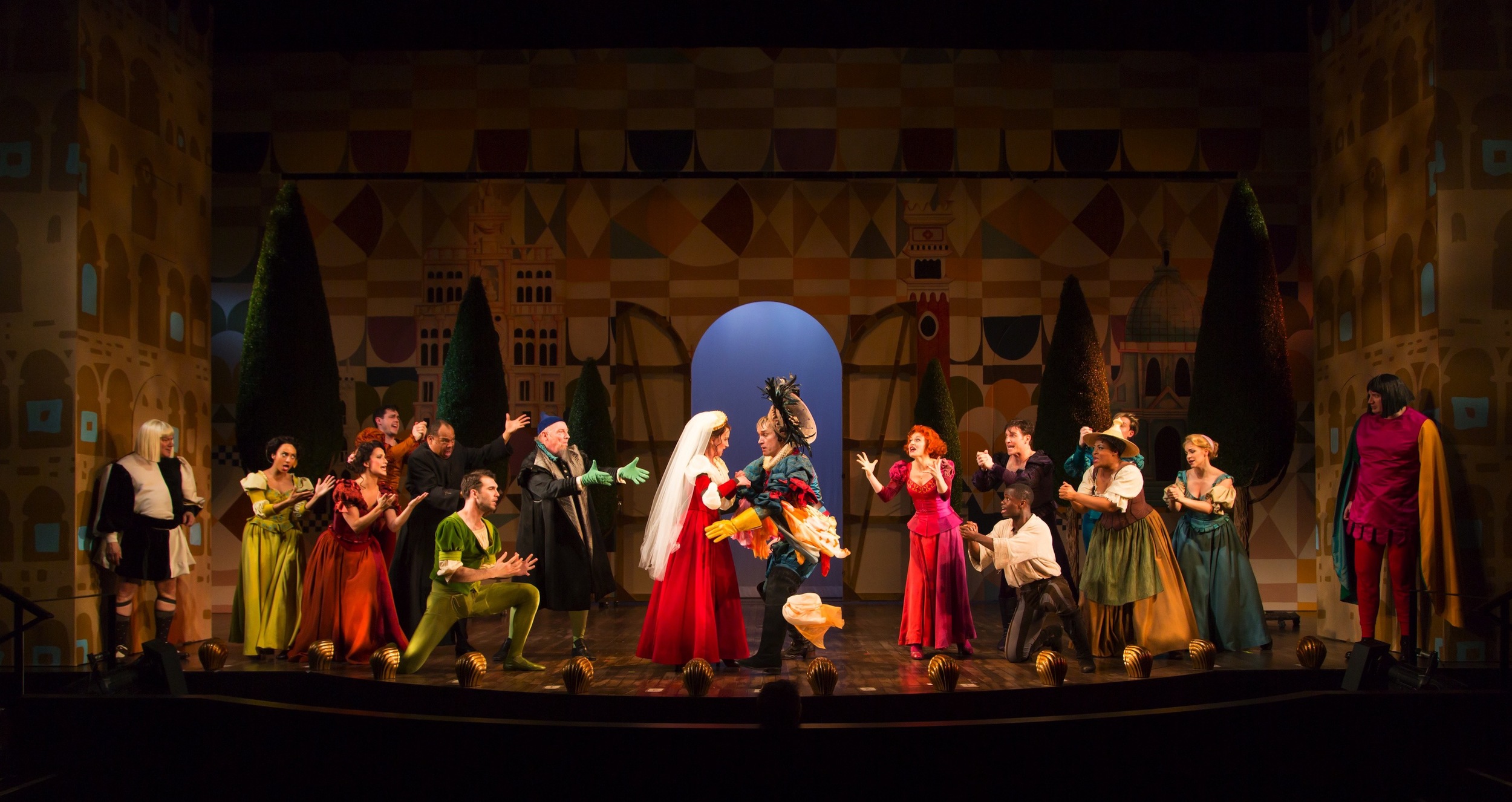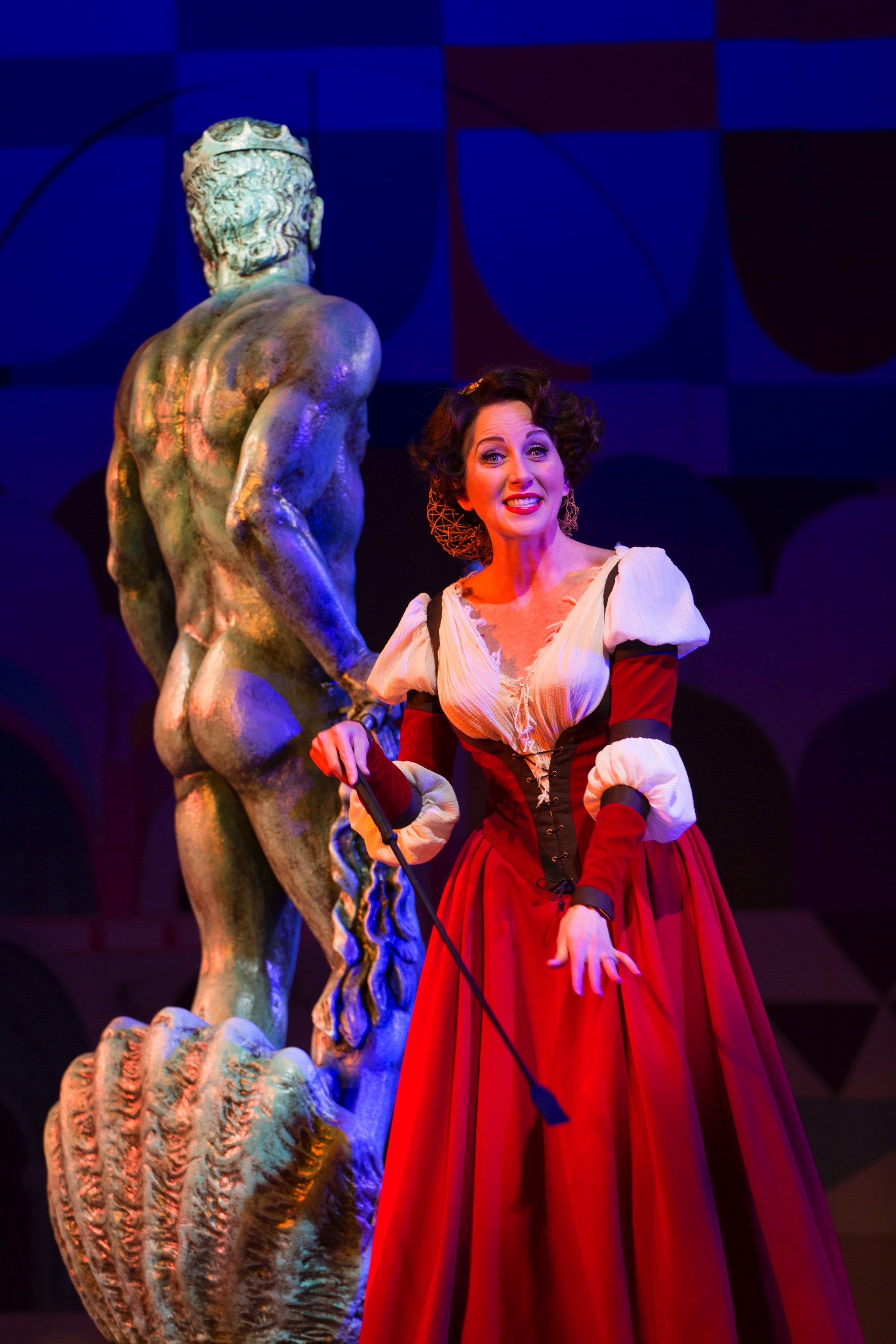Review of Anastasia, Hartford Stage
Back in 1997, Don Bluth et al. created Anastasia, a musical cartoon feature film (adapted from a 1950s movie that earned Ingrid Bergman an Oscar). The cartoon musical, from Twentieth Century Fox, gave Disney a run for its money. The latter studio had come back from the dead in the 1980s and discovered box office gold by incorporating the methods of Broadway musicals into animated films with The Little Mermaid (1989), Beauty and the Beast (1991), The Lion King (1994). All three were later adapted to the stage—such is the interchangeability of show biz—with different levels of success. Now, Hartford Stage bring us Anastasia, A New Musical, directed by Artistic Director Darko Tresnjak with choreography by Peggy Hickey, another Broadway-bound show adapted from a popular animated film.
The story of Anastasia Romanov takes its cue from the many imposters who claimed to be her, keeping alive the story that she had survived the assassination of Tsar Nicholas II and his family in the Russian revolution of 1917. Bluth and company clearly saw the usefulness for an animated feature of any story involving a princess, and Disneyfied the story with anthropomorphic animals and an evil mystical villain—Rasputin!—to give some humor and thrills to the tale. Composers Stephen Flaherty, music, and Lynn Ahrens, lyrics, created for the film several big numbers, notably “Once Upon a December,” “Journey to the Past,” “Learn to Do It,” and “Paris Holds the Key (To Your Heart).” For the stage show, Flaherty and Ahrens have expanded their supplementary songs from the animated film into a full scale musical that tells its tale through song more than dialogue.
Gleb (Manoel Felciano) and Anya (Christy Altomare) (photo: Joan Marcus)
The task facing Terrence McNally, who wrote the Book of Anastasia, A New Musical, is to create yet another story based on the spurious legend of Anastasia’s survival that lets viewers have their fairy tale—she is a princess!—while doubting it too. McNally replaces the evil mad monk with dastardly Communist apparatchiks who must lay to rest the dangerous notion that a Russian princess might yet live. This alteration in favor of something a bit more historically accurate helps in some ways, even as it flattens the fairy tale aspects considerably. For one thing, there are nearly no comic roles and what passes for jokes are basically quips—cue Gertrude Stein (Rayanne Gonzales). And Communists make for rather colorless villains. The story has little dramatic interest, most of the songs serve only narrative purpose and are uninspiring as vehicles for feeling, and the performances, for the most part, are adequate rather than stellar.
Anya (Christy Altomare) and the cast of Anastasia (photo: Joan Marcus)
Most of the kudos in the show go to the technical features. Anastasia is a spectacle and in that sense it’s spectacular. The movable set decorations of Alexander Dodge’s brilliantly conceived scenic design make us look forward to each scene change—which is to say, each new song—and video & projection design by Aaron Rhyne makes the background more fascinating than the foreground action more than once. Peggy Hickey’s choreography gives this huge troupe of dancers—there are 14 in unnamed but multiply-costumed roles including a segment from Swan Lake—much to do and it is all brought off flawlessly. Linda Cho’s costumes will no doubt spawn facsimiles for figurines, or should. The Dowager Empress’ get-ups are gorgeous at a level that only the regal can wear, and Mary Beth Peil looks every inch a queen in her outfits. And getting to put on stage peasant garb, military wear, bohemian chic, and haut bourgeois splendor makes Cho’s contribution very much a high point. The projections and scenic design and Donald Holder’s lighting design make the stage able to compete with animated action, and Peter Hylenski’s sound design gives the actors’ voices that ever-bright note that makes cartoon sound so distinctive.
Anastasia, age 6 (Nicole Scimeca), Dowager Empress (Mary Beth Peil) (photo: Joan Marcus)
With such a spectacle on offer, I wish I could say more in favor of the show tunes. It helps that “Once Upon a December”—which we hear three times—is a pretty song. It has to carry the emotional freight of the show, but is never more moving than it is at the start when Peil, as Anastasia’s Nana, the Empress, sings it with Anastasia, age 6 (Nicole Scimeca). Which is to say the real Anastasia—at the last time the two actually see each other. The reunion and reprise, for McNally’s purposes, is real too, in the sense that everyone comes to believe that Anya (Christy Altomare), an amnesiac, Cinderella-like menial taken under-wing by two opportunists, Vlad (John Bolton, amusing) and Dmitry (Derek Klena, mostly still a cartoon), is the actual Anastasia. But there’s really not much suspense or satisfaction in whether or not the aging Empress will accept Anya as kin.
The flight from the dogged Kremlin agent Gleb (Manoel Felciano) and his minions provides some excitement here and there—a train sequence gets things moving near the end of Act I—but most of the high-points on stage are incidental to the actual story. Two such are the moody song of the exiled Russians, “Land of Yesterday,” and “The Countess and the Common Man,” a comical duet by Vlad and his onetime flame, Countess Lily (the Empress’s companion, coincidentally). Both those numbers feature Caroline O’Connor as Lily and, performance-wise, she’s the best thing in the show, which helps Act II, set in Paris where she and the Empress reside.
Countess Lily (Caroline O'Connor) and Vlad (John Bolton) (photo: Joan Marcus)
The other key bit from the film that holds its own here is “Learn to Do It,” the Eliza Doolittle-like number wherein Vlad and Dmitry try to get Anya to become sufficiently aristocratic. At that point, halfway through Act I, I still had hopes that the show had lots more such tunes up its sleeve. Alas, no. “Journey to the Past,” the big rousing number before the curtain, gives Altomare a chance to show off her range and puts the show’s purpose into song.
John Bolton, Caroline O'Connor, center, and the Russian exiles (photo: Joan Marcus)
As a journey into the past, the notion that every little girl wants to be a princess—which Disney has done much to perpetuate—returns to the point in history at which aristocracy became a dirty word, for the sake of an ideology that, in Anastasia’s view, is pernicious because it’s against grandeur and beautiful accessories. If the show has a point, it’s achieved when the three renegades from Soviet Russia, one of them allegedly nobility, hit Paris and find themselves outsiders to the capitalist fat cats as well. One needn’t really be a princess, simply able to dress like one. Better go see Grandma.
Tresnjak, who began the season trying to adapt film noir to the stage with Rear Window, again with much better tech than story, gets closer here to what seems his desiderata: stage productions that are interchangeable with movies in their attention to visuals over script. The point made by the top-notch animated features produced by Disney in the late 1980s, early 1990s (named above) was that the Broadway musical’s tendency to employ caricatures rather than characters could suit cartoon characters perfectly. That Broadway should then make caricatures of cartoon characters might reasonably nonplus a few, while for those who like that sort of thing that’s the sort of thing they like. Anastasia, if you’re willing to forego laughs, excitement, complex motivation, and are happy with great visuals and a handful of winning numbers, should not disappoint.
Anastasia, A New Musical
Book by Terrence McNally
Music by Stephen Flaherty
Lyrics by Lynn Ahrens
Choreography by Peggy Hickey
Directed by Darko Tresnjak
Inspired by the Twentieth Century Fox Motion Pictures
Scenic Design: Alexander Dodge; Costume Design: Linda Cho; Lighting Design: Donald Holder; Sound Design: Peter Hylenski; Video & Projection Design: Aaron Rhyne; Wig & Hair Design: Charles G. Lapointe; Music Director: Thomas Murray; Orchestrator: Doug Besterman; Vocal & Text Coach: Claudia Hill-Sparks; Music Preparation: Joann Kane Music, Russell Bartmus & Mark Graham; Fight Choreographer: Jeff Barry; Casting: Telsey + Company, Craig Burns, CSA; Vocal Arranger: Stephen Flaherty; Dance Music Arranger: David Chase; Associate Music Director: Steven Malone; Dramaturg: Elizabeth Williamson; Production Stage Manager: Bonnie Panson; Stage Manager: Trey Johnson; Assistant Stage Manager: Kelly Hardy; Production Manager: Bryan T. Holcombe; Associate Artistic Director: Elizabeth Williamson
Cast (in order of appearance): Nicole Scimeca; Mary Beth Peil; Lauren Blackman; Constantine Germanacos; Molly Rushing; Alida Michal; Samantha Sturm; Shina Ann Morris; Manoel Felciano; Derek Klena; John Bolton; Christy Altomare; Ken Krugman; Kevin Ligon; Johnny Stellard; Rayanne Gonzales; Janet Dickinson; Caroline O’Connor; Kevin Munhall; Max Clayton; James Brown III
Hartford Stage
May 12-June 19, 2016










